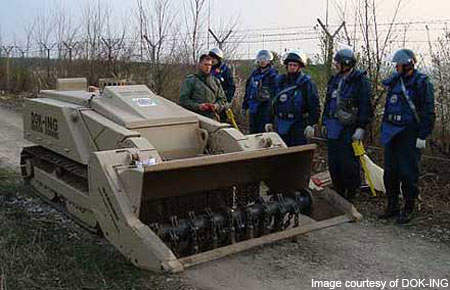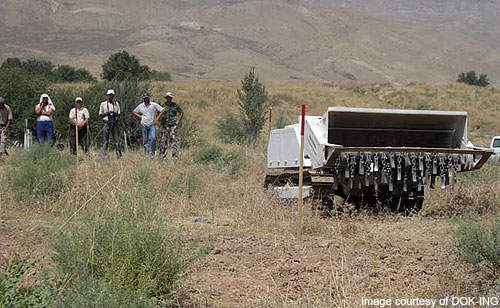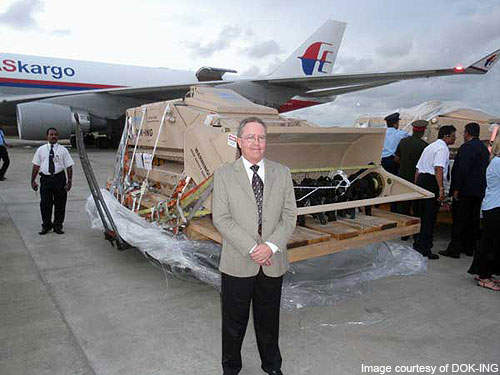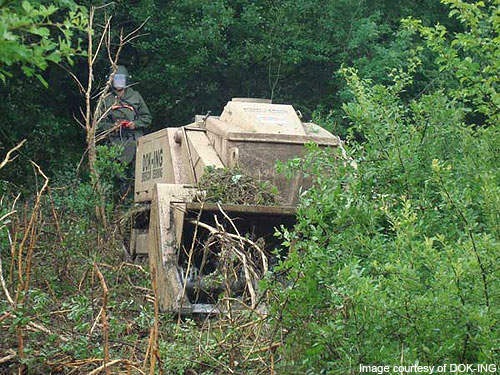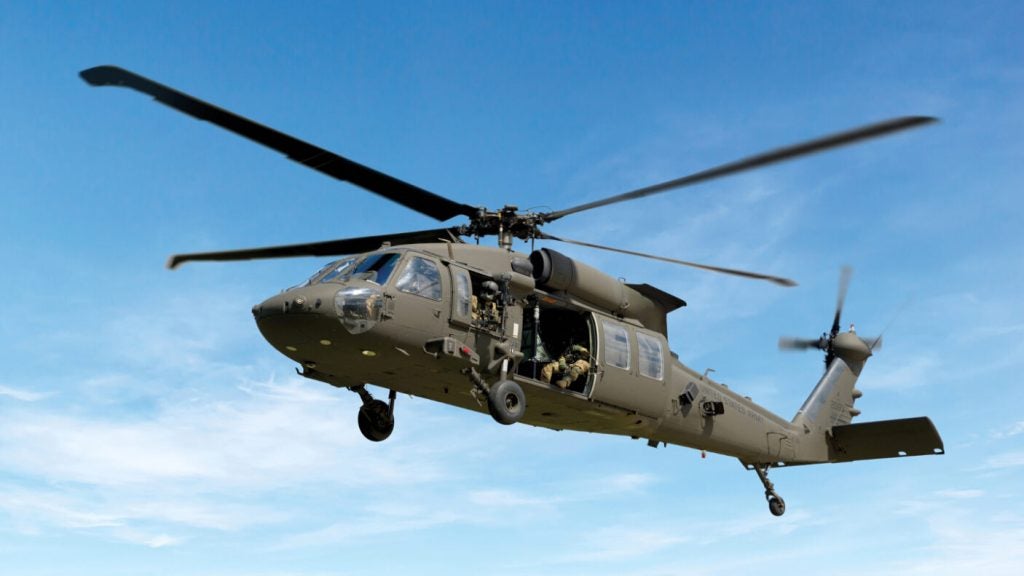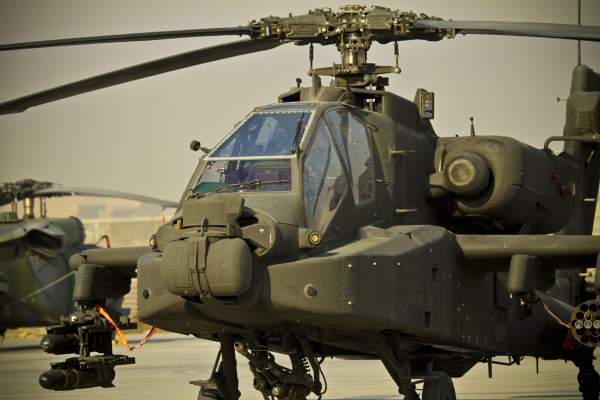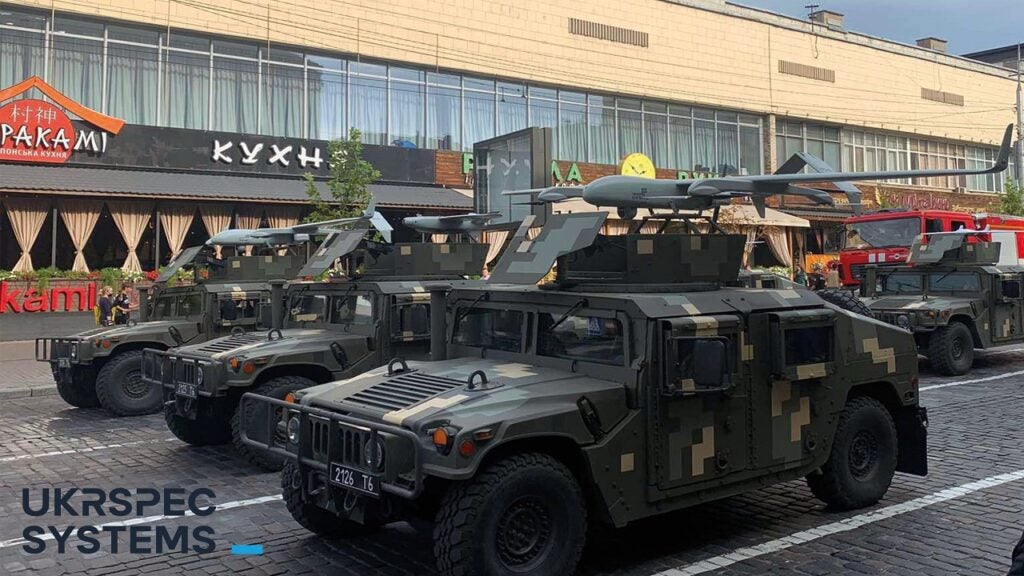The MV-4 is a light tracked, remote-controlled mine clearance system produced by DOK-ING. MV-4 can clear all types of anti-personnel (AP) mines and unexploded ordnance (UXO). The vehicle is designed specifically for humanitarian de-mining missions.
DOK-ING delivered over 150 MV-4 Mine Clearance Systems to various armed forces and organisations/de-mining companies. The US Army operates 38 units in the USA, Afghanistan and Iraq. Other military operators are: Sri Lankan Army (16), Swedish Army (four), Croatian Army (two), Irish Army (two), Greek Army (one) and Colombian Navy Marines (one).
DOK-ING delivered four MV-4 systems to the General Command of the Army of Nicaragua in September 2011. The Italian Ministry of Defence received three MV-4B systems along with three De Angelis trailers in February 2012.
DOK-ING MV-4 mine clearance system design and features
The MV-4 was designed based on the previous MV-1, MV-2 and MV-3 mine clearance systems. The vehicle features a hardened steel flail attachment tool. The flail is attached with several hammers at the end. It performs mine clearance, soil treatment and vegetation cleaning.
The machine can be fitted with additional attachments such as a tiller, roller, gripper and blade for a wide range of operations.
Tiller serves as a clearing tool for field control or mine clearance. It can clear anti-personnel mines laid to a depth of up to 320mm. The tool is suitable for mine clearance in areas with little or no vegetation.
The roller toll is also used for field control or mine clearance purposes. The gripper tool is used to lift and move dangerous objects, cars and other obstacles in the field.
The dozer blade is employed in clearance tasks including working soil holding explosives, removal of improvised explosive devices (IEDs) and clearing hazardous roadblocks. The remotely controlled system can be operated from an armoured vehicle or from a safe distance.
Mine clearance system
The flail unit is used as a standard tool for mine clearance tasks. The unit can be rotated both clockwise and anti-clockwise at up to 900rpm. It achieves a ground penetration depth of 240mm to 320mm based on soil conditions. The embedded mines are activated when force is created by the 34 flail hammers. The chains and hammers are easily replaced if damaged in the explosion.
The system can effectively work in the area consisting of flora and trees of up to 50mm diameter. Difficult terrains such as trenches, obstacles and canals are easily manoeuvred by raising, lowering, extending and retracting the flail tool. MV-4 has the mine clearance capacity of 944-2,184m²/h depending on terrain.
MV-4 mine protection
The hull structure is made of 8mm-10mm thick armour plating. The engine and other key components of the vehicle are protected by HARDOX 400 steel armour plates. The impact hammers constructed of steel can resist mine blasts.
MV-4 can withstand the explosion of landmines and standard 7.62mm Nato ball ammunition. The ability to resist AT mine detonations was proved at the Swedish EOD and Demining Centre (SWEDEC) in July 2004.
Engine
MV-4 is powered by Perkins 1106 C-E60 TA modified 6-cylinder water cooled, turbo-charged diesel engine. The engine delivers a power output of 129kW at 2,200rpm. The fuel tank has 70l capacity and the hydraulic oil capacity is 200l. The vehicle consumes 15l-25l of fuel an hour based on soil type and operating procedures.
Mobility
The compact dimensions and low track-ground pressure allow MV-4 to pass over difficult terrain. The machine can clear transverse slopes of 35° up and down, and longitudinal slopes of 20°. It can drive on transversal slopes of 45° up and down, and longitudinal slopes of 35°.
MV-4 can work very near to obstacles such as buildings and other structures when travelling in parallel (25cm) and vertical directions (75cm).
MV-4 can drive through water to a depth of 45cm without preparation and can turn 360° on a single point. It has the ability to cross a 0.5m wide and a 0.3m deep trench, and vertical obstacles of about 0.3m in height.
The machine uses its hydraulic arms to perform self-recovery from a trench or channel. The system can be easily transported by a truck, a 20ft container or a transport helicopter.
The Global Armoured and Counter-IED Vehicles Market 2011-2021
This project forms part of our recent analysis and forecasts of the global armoured and counter-IED vehicles market available from our business information platform Strategic Defence Intelligence. For more information click here or contact us: EMEA: +44 20 7936 6783; Americas: +1 415 439 4914; Asia Pacific: +61 2 9947 9709 or via email.

